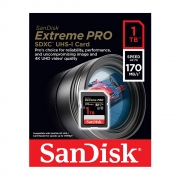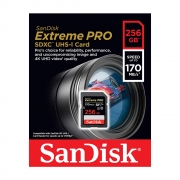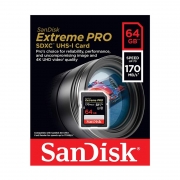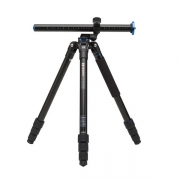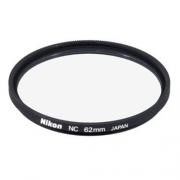Canon EF 100mm f/2.8 L IS USM Ống kính Macro là một ống kính cực kỳ thú vị để sử dụng.Nó kết hợp chất lượng hình ảnh tuyệt vời với chiều dài tiêu cự hữu ích, một cơ thể tương đối nhỏ / ánh sáng, nhanh chóng / AF yên tĩnh 01:01 (1x) khả năng vĩ mô - và (Hybrid ổn định hình ảnh) HIS.

Lá hoarfrosted trên đã bị bắt cầm tay (1 / 25 giây, f/2.8, ISO 100) giữa cơn gió rất mạnh mẽở phía trên cùng của Cadillac Mountain (Maine). Canon EF 100mm f/2.8 L IS USM Macroống kính được gắn kết với một Canon EOS 5D Mark II.

The estimated street price was not bad for a 2009-era L lens either.

Review a size/weight comparison chart below.
| Model | Weight | Dimensions w/o Hood | Filter | Year | ||
| Canon EF 50mm f/2.5 Macro Lens | 9.9 oz | (280g) | 2.7 x 2.5" | (68 x 63mm) | 52mm | 1987 |
| Sigma 50mm f/2.8 EX DG Macro Lens | 11.1 oz | (315g) | 2.8 x 2.5" | (72 x 64mm) | 55mm | 1998 |
| Canon EF-S 60mm f/2.8 Macro USM Lens | 11.8 oz | (335g) | 2.9 x 2.8" | (73 x 70mm) | 52mm | 2006 |
| Canon MP-E 65mm Macro Lens | 25.8 oz | (730g) | 3.2 x 3.9" | (81 x 98mm) | 58mm | 1999 |
| Tamron 90mm f/2.8 Di Macro Lens | 14.3 oz | (405g) | 2.8 x 3.8" | (72 x 97mm) | 55mm | |
| Canon EF 100mm f/2.0 USM Lens | 16.2 oz | (460g) | 3 x 2.9" | (75 x 74mm) | 58mm | 1991 |
| Canon EF 100mm f/2.8 USM Macro Lens | 21.2 oz | (600g) | 3.1 x 4.7" | (79 x 119mm) | 58mm | 2000 |
| Canon EF 100mm f/2.8 L IS USM Macro Lens | 22.1 oz | (625g) | 3.1 x 4.8" | (77.7 x 123mm) | 67mm | 2009 |
| Sigma 105mm f/2.8 EX DG Macro Lens | 15.9 oz | (450g) | 2.9 x 3.7" | (74 x 95mm) | 58mm | |
| Sigma 150mm f/2.8 EX DG HSM Macro Lens | 31.6 oz | (895g) | 3.1 x 5.4" | (79.6 x 137mm) | 72mm | 2006 |
| Canon EF 180mm f/3.5 L USM Macro Lens | 38.5 oz | (1090g) | 3.3 x 7.4" | (83 x 187mm) | 72mm | 1996 |
| Sigma 180mm f/3.5 EX DG HSM Macro Lens | 33.4 oz | (945g) | 3.1 x 7.1" | (80 x 180mm) | 72mm | |
| Tamron 180mm f/3.5 Di Macro Lens | 32.5 oz | (920g) | 3.3 x 6.5" | (85 x 166mm) | 72mm | |
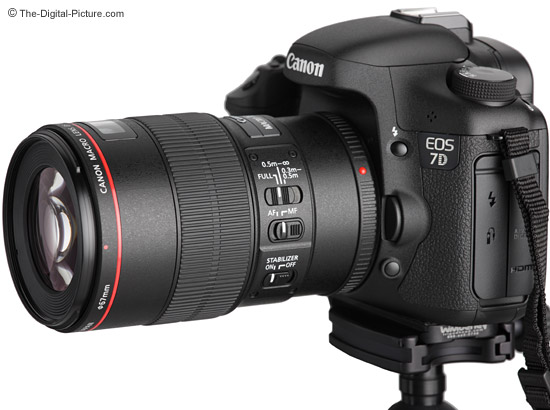

| Magnification: | ∞ | 1:5 | 1:3 | 1:2 | 1:1.5 | 1:1 |
| Exposure Factor (loss in stops) | 0 | 2/3 | 1 | 1 1/3 | 1 2/3 | 2 |
| Effective Aperture | f/2.8 | f/3.6 | f/4.1 | f/4.6 | f/5.0 | f/5.9 |
AE (Auto Exposure) will automatically adjust for this aperture change, but a longer shutter speed is the result.
And when you move in close, DOF (Depth of Field) becomes very shallow at wide apertures. At macro distances, DOF becomes shallow at even narrow apertures. Proper camera alignment must be carefully selected to place the plane of focus on the proper parts of the subject (such as the wings of a butterfly) even at f/8 and f/11 when near 1x magnification. Non-stabilized shot setup is not easy.
Enter HIS - Hybrid Image Stabilization - adding another dimension of stabilization over conventional IS. Hybrid IS adds correction for shift movement to the conventional angular correction as the graphic below depicts.

This H-IS system is rated for 4 stops of camera motion help. Without IS, I need a shutter speed of 1/80 to 1/100 to handhold this lens on a full frame body. With IS switched on, in a not-very-steady shooting position (I felt shakier than usual during this test), I can get a very good keeper rate at shutter speeds as long as 1/5 second. Impressive - and at least 4 stops of improvement. Here is an example:

The above image stabilization examples were captured in RAW format using an EOS 5D Mark II and processed in Canon's DPP. The Standard Picture Style was used with the sharpness setting reduced to "1" (very low). Bump the sharpness setting to 2 or 3 and even the .4 second sample is very usable.
IS is not as effective at macro distances. Canon rates this IS system for 3 stops of assistance at .5x/2:1 and 2 stops of assistance at 1x/1:1. Testing IS completely handheld at 1x/1:1 is not easy - it is very hard to even keep the subject in focus when shooting completely freehand at this short distance. That said, at 1x with IS on, I get a good keeper rate at a shutter speed of 1/30 second and a few at 1/15. That is close to two stops for me.
One of the big advantages of IS is that it is easier to frame the shot. The jittery-ness of the viewfinder goes away and you have a still view of your subject. This is especially helpful for tight framing of close subjects.
Many ask about the sound made by IS. This IS implementation makes a click when it starts and again when it stops. How much noise it makes during operation depends on how much motion the lens is trying to correct. If stationary, a quiet hum with a some quiet clicks can be heard if your ear is near the lens. Move the lens around and IS whirs and clicks more significantly. The sound is definitely not offensive to me.
Just because you can shoot at these long shutter speeds doesn't mean you should. IS does not keep your subject still. People move. Bugs crawl. The wind blows. Or, use the motion blur for effect in the image. Flowing water and blowing leaves may be what it takes to make that average shot into an above-average shot. IS is there when you need it. And I find that IS makes this lens much more fun usable.
IS does not replace a tripod for all purposes. And an adequate, properly-used tripod can replace IS in many situations. The Canon EF 100mm f/2.8 L IS USM Macro Lens is designed to accept an optional Canon Tripod Ring D (not available at review time). I expect this to be a very useful accessory - for both tripod mounting and for mounting accessories to the lens itself (like a macro flash bracket).
Those using the Canon Macro Ring-Lite MR-14EX Flash or Canon Macro Twin-Lite MT-24EX Flash will need to get the Canon 67 Macrolite Adapter (and a 58mm lens cap) for this lens.

Buy the Canon EF 100mm f/2.8 L IS USM Macro Lens and a genuine Canon LP1219 Lens Case (shown above with an EF 100mm f/2.8 L IS Lens inside) is yours.
Choosing a macro lens, like choosing any lens, means getting the right focal length for your needs. The 100mm focal length is one I highly recommend.
| Model | MFD | MWD | MM | 12mm ET | 25mm ET | 1.4x | 2x | ||
| Canon EF-S 60mm f/2.8 Macro USM Lens | 7.9" | (200mm) | 3.5" | (90mm) | 1x | 1.28x | 1.61x | N | N |
| Tamron SP 90mm f/2.8 Di Macro Lens | 11.4" | (290mm) | 3.9" | (99mm) | 1x | Y | Y | ||
| Canon EF 100mm f/2.8 USM Macro Lens | 11.8" | (300mm) | 6.0" | (150mm) | 1x | 1.19x | 1.39x | N | N |
| Canon EF 100mm f/2.8 L IS USM Macro Lens | 11.8" | (300mm) | 5.9" | (146mm) | 1x | 1.17x | 1.37x | N | N |
| Sigma 105mm f/2.8 EX DG Macro Lens | 12.2" | (310m) | 4.7" | (122mm) | 1x | N | N | ||
| Sigma 150mm f/2.8 EX DG HSM Macro Lens | 15.0" | (380mm) | 7.6" | (194mm) | 1x | Y | Y | ||
| Canon EF 180mm f/3.5 L USM Macro Lens | 19.2" | (480mm) | 9.5" | (240mm) | 1x | 1.09x | 1.21x | Y | Y |
| Sigma 180mm f/3.5 EX DG APO HSM Macro Lens | 18.0" | (460mm) | 1x | Y | Y | ||||
| Tamron SP 180mm f/3.5 Di LD Macro Lens | 18.5" | (470mm) | 1x | Y | Y | ||||
Choose a longer focal length for more working distance, a narrower AOV (Angle of View) and a more-enlarged background / compressed image. Longer focal lengths require more distance to acquire the same subject framing. The result is a change of perspective - the telephotos compress/flatten the subject features more than short focal lengths. The wider angle of view of the short focal length macro lenses mean that more of the background will be in the picture - and that the background will be less-diffusely blurred. Here is an example:

The pictures above were taken with three macro lenses (180mm L, 100mm non-IS and60mm). They are identically framed using the same camera, the same aperture setting (f/16) and have identical subject to background distances. DOF (Depth of Field) is not different (same framing, same aperture = same DOF until closer to the hyper-focal distance), but perspective / compression / angle of view are very different. The 180mm lens shows only a small physical area of the subject's background that is enlarged - magnifying the blur. Background subjects in the 60mm picture appear to be more in focus. They are not - they are just about as blurred, but they appear much smaller in the picture - and there are more of them because of the 60mm's angle of view. This yields a less diffusely-blurred background. If you are using a backdrop (such as rolled paper), the background blur aspect will probably not be important to you.
There are downsides to the longer focal length macro lenses. They are larger/heavier and require a faster shutter speed for handholding. They also cost more.
If you are looking for the ultimate nature macro shots, there is probably not a better choice than the Canon EF 180mm f/3.5 L USM lens. But, this is a relatively heavy and expensive lens that focuses slowly.
The 100mm focal length macro lenses offer a medium working distance, a relatively small size/light weight and a moderate amount of background blur. Another reason for choosing a macro lens focal length and another very strong reason to choose a 100mm lens is that you have another use for the same focal length.
A 100mm macro lens with a relatively wide aperture, superb image quality, fast AF and an impressive IS implementation has a huge number of uses in addition to macro photography - including portraits, landscapes and indoor sports. Additional uses make it easier to justify the purchase cost of the lens - and the space it takes in the bag.

The above rainbow moving over the ocean was captured using the Canon EF 100mm f/2.8 L IS USM Macro Lens and a EOS 5D Mark II.
The 100mm focal length sits nicely above the typical 18-55mm kit lens offered on many Canon DSLR Cameras, making the Canon EF 100mm f/2.8 L IS USM Macro Lens a nice second lens for general purpose use with the addition of macro capabilities. Warning: when you see the image quality this lens delivers, you are going to replace your kit lens also.
What makes this lens fun to use? In addition to the many reasons I've already mentioned, the availability of so many great little subjects is the remaining big fun-to-use reason for this lens. When the larger picture is not right for the distant shots, focus down on the little things. Or, photography of the tiny things of this world may even be or become your first passion. None of us will expend the macro opportunities in front of us. Even in the dead of winter, there is your cat's eye, flowers from the store (give them to your wife first), snowflakes ...
I called the Canon EF 100mm f/2.8 USM Macro Lens Canon's "Most fun per dollar lens". While that lens is less expensive, I'm thinking the Canon EF 100mm f/2.8 L IS USM Macro Lens may be the new holder of this title. The improvements in this lens, especially the Hybrid IS, go a long way toward increasing the fun-ness. And the results are definitely fun-inducing. This is a highly recommended lens.











